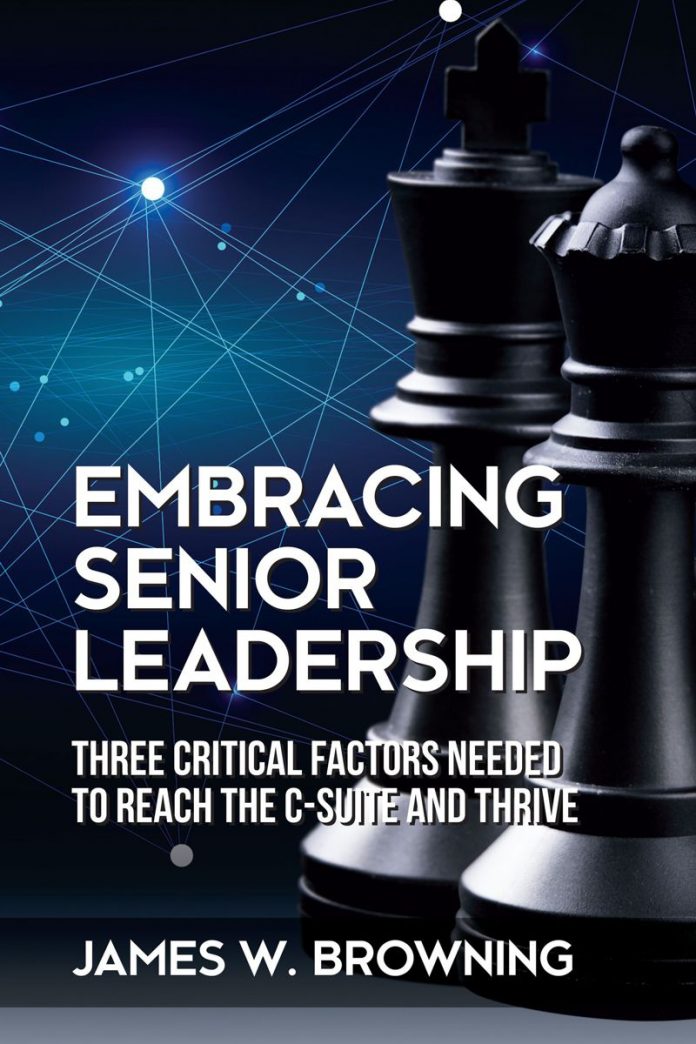
Following the pandemic, today’s senior leaders and executives are facing extraordinarily complex and daunting challenges. Many are ambiguous to describe, there is no agreement on a solution, and traditional rational responses can worsen them. Boards, stakeholders, and organizational members are leaning on their leaders to achieve success quickly in uncharted territory.
Unfortunately, proven lower-level leaders advancing to the senior level are struggling—many are failing and losing their tenure. Why is this happening?
While there are myriad performance and behavioral issues in play, they are unprepared for senior leadership’s unique roles and responsibilities and the extraordinary strategic challenges they face—business, government, military, or nonprofit. Ill-prepared senior leaders may derail their careers and damage their organizations.
It’s not that these leaders are unaware of their unpreparedness. Before the pandemic, McKinsey reported, “74 percent of US [senior] leaders and 83 percent of global ones think they are unprepared for their [senior level] roles (Keller and Meany, 2018).” In the aftermath of the pandemic, Development Dimensions International (DDI) reports only 28 percent of HR professionals believe their organizations have high-quality leadership. Only 11 percent say they have a strong succession plan to fill leadership roles.
This unpreparedness, regrettably, is despite the barrage of advice at every leader’s fingertips and their participation in numerous leader development programs, MBA and EMBA courses, and proven lower-level successful leadership experiences.
What is missing?
What is missing is a clear, unambiguous understanding that leading at the senior level is fundamentally different from leading at lower organizational levels. It’s not a matter of scale (although the magnitude of authority and responsibility certainly expands and becomes more complex).
What is needed?
What is needed is a strong foundation as to what is required to be a successful senior leader. The more than 200 senior leaders and executives I’ve talked with argue the following three critical factors must be mastered to be successful at the senior level:
- The Job. Having in-depth knowledge and skillsets to meet the extraordinary challenges faced at the senior level and perform the required unique work.
- The Ability. Having the personal readiness to perform the unique work required at the senior level.
- A Plan. Having a well-thought-out transition plan once selected for a senior-level position (Browning, 2022).
Why is Senior Leadership Different?
Operational leaders (my term for lower-level leaders) focus primarily on running the organization and achieving operational excellence—attention is internal to the organization. In contrast, senior leaders have a dual responsibility.
The first is ensuring their organization remains relevant and viable three to twenty years into the future. The senior leaders I talked with spend 50 percent or more of their time looking outside their organization, attempting to make sense of what is happening and trying to see “what’s around the corner.”
The second is ensuring the organization is accomplishing its mission and meeting or exceeding stakeholders’ and customers’ expectations. But this is not “operational” leadership; instead, it is much more strategic. Like pelicans gliding over the ocean and periodically diving to catch a fish, senior leaders glide over their organizations, looking for issues, opportunities, and problems. And when necessary, they dive into the organization to address a specific organizational need. Unfortunately, many senior leaders enjoy being operational rather than doing the work required as senior leaders.
To thrive, senior leaders must be adept in the two components of the art and practice of strategic leadership. The first is the process—exercising strategic and systems thinking in assessing and evaluating the external and internal environments, developing informed foresight and strategies, and making decisions. The second is leadership—exercising influence to gain support for the leader’s vision, strategies, strategic objectives, and decisions.
Where To Focus?
CHROs, EMBA courses, coaches, mentors, authors, consultants, and other executive training and development programs should ensure the three factors, The Job, The Ability, and The Plan, are embedded in their senior-leader development training and education programs. Some elements to consider are:
- A holistic view of what entails senior leaders’ unique roles and responsibilities.
Senior leaders need clarity on what makes senior-level leadership extraordinarily challenging and the importance of being adept in the art and practice of strategic leadership. This requires an enhanced ability to persuade, leverage power and politics, communicate and negotiate strategically, and build and nurture strategic networks.
Internally, senior leaders must lead and manage four crucial organizational requirements well:
- Building and leading their senior leadership team (SLT) early in their tenure.
- Shaping a supportive organizational culture.
- Making senior-level decisions. Decisions at the senior level are consequential.
- Leading and managing organizational change. The ability to embrace and execute transformational change will be a senior leader’s enduring competitive advantage.
- The personal readiness to perform these unique roles and responsibilities.
The primary means for doing the work rests on the strength and power of a leader’s five personal dimensions. These five are:
- Cognitive capacity (remembering, perceiving, thinking, and reasoning skills and abilities).
- Social capacity (interpersonal and emotional intelligence skills). For example, building rapport and establishing effective, collaborative relationships is crucial.
- Personal traits, values, and preferences.
- Technical skills and business acumen. As senior leaders, technical skills are less important, whereas business acumen is essential.
- Behavioral capacity (ability to change or adapt habitual behavior patterns).
- A well-thought-out executable transition game plan. Helps leaders facilitate a smooth transition to their new senior-level
Bottom line: Senior leaders’ knowledge of the job’s unique requirements, having sufficient capacity in each of their personal dimensions, and a well-thought-out transition plan is critical to their success at the senior level.
Senior-leader development programs must provide a comprehensive, in-depth understanding of the body of knowledge needed to succeed (e.g., the mindset), the competencies, and expertise in each of these three vital factors. Otherwise, aspiring senior leaders may squander or undermine their opportunity to reach the senior level and succeed once there.
References
- Scott Keller and Mary Meaney, “Successfully transitioning to new leadership roles,” McKinsey, May 2018. https://www.mckinsey.com/business-functions/organization/our-insights/successfully-transitioning-to-new-leadership-roles.
2. DDI, Global Leadership Forecast 2021 (Development Dimensions International, Inc., 2021). 8,10. https://www.ddiworld.com/glf.
3. James Browning, Embracing Senior Leadership: Three Critical Factors Needed to Reach the C-Suite and Thrive(Irvine, CA: Universal, 2022).



